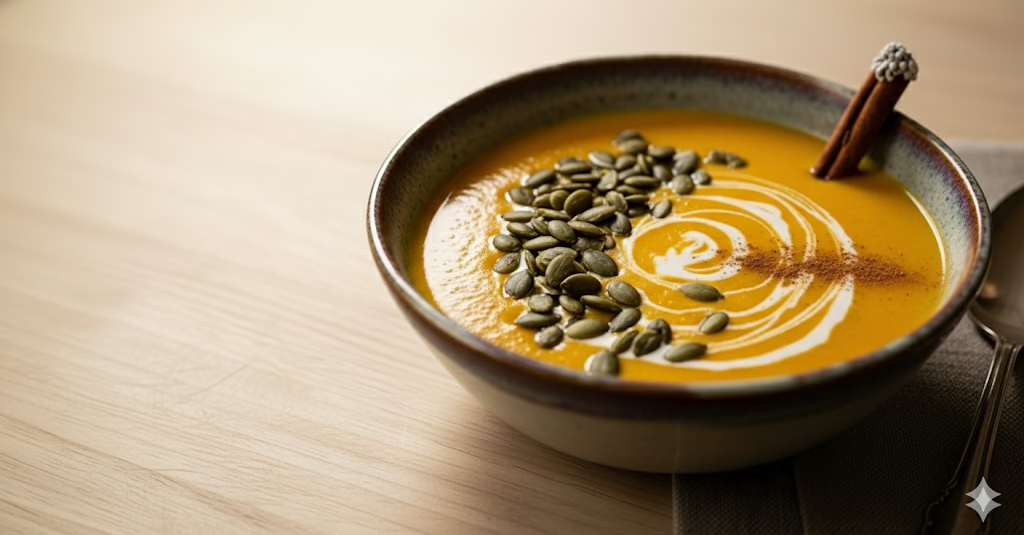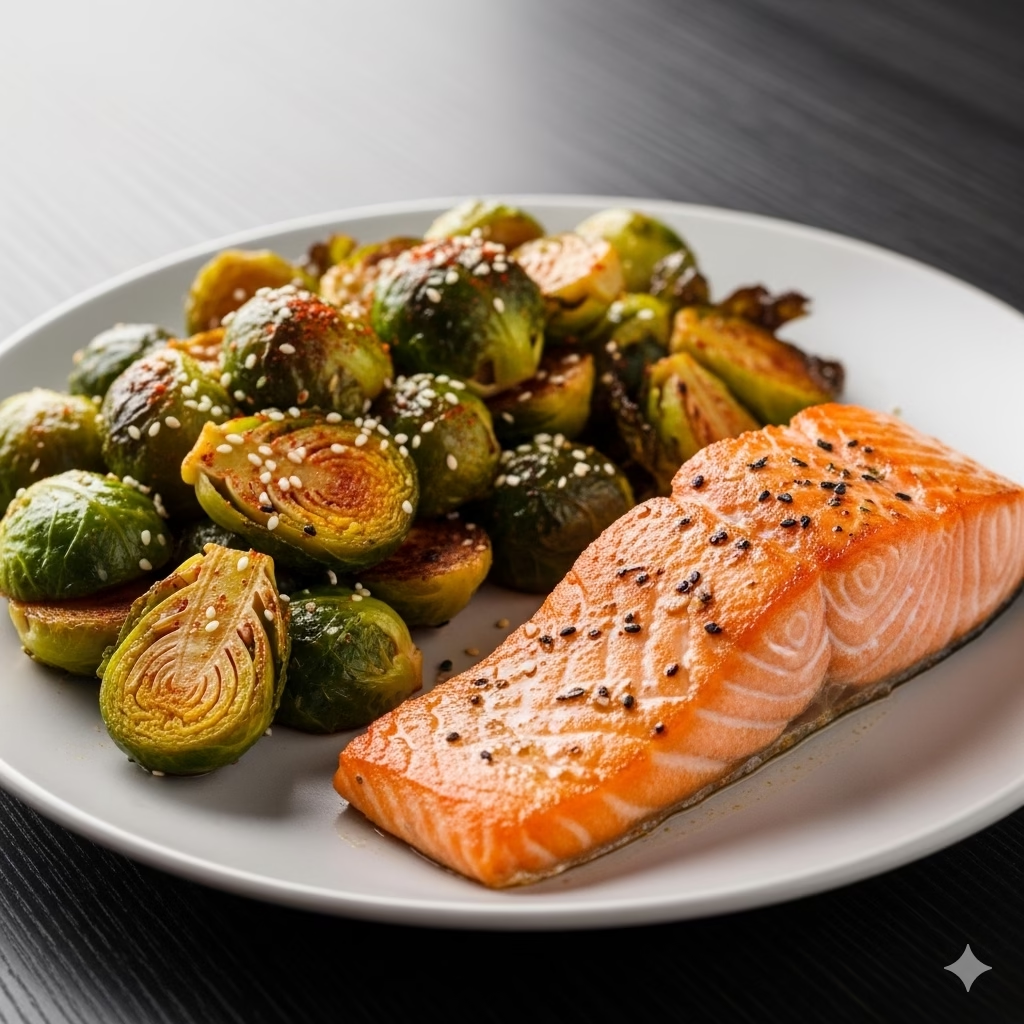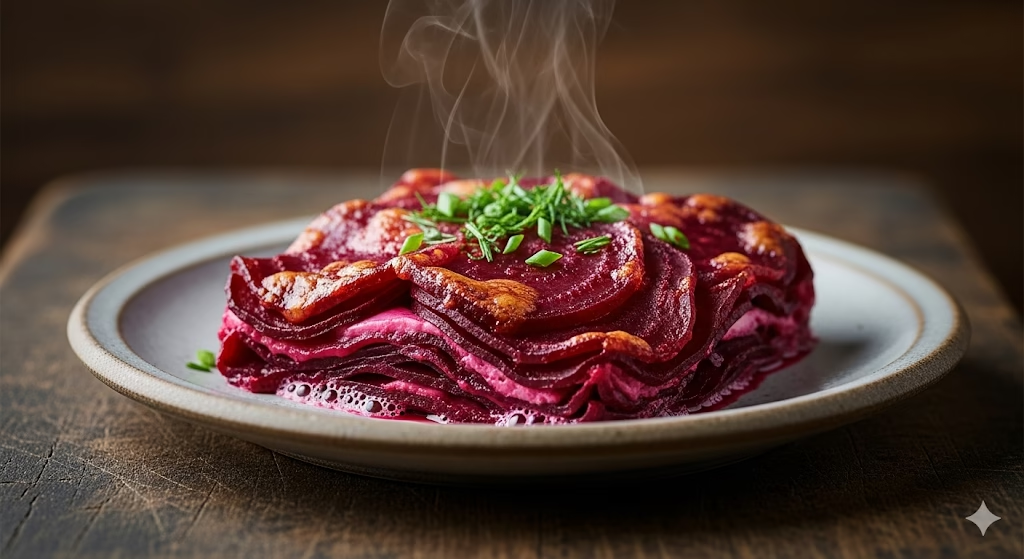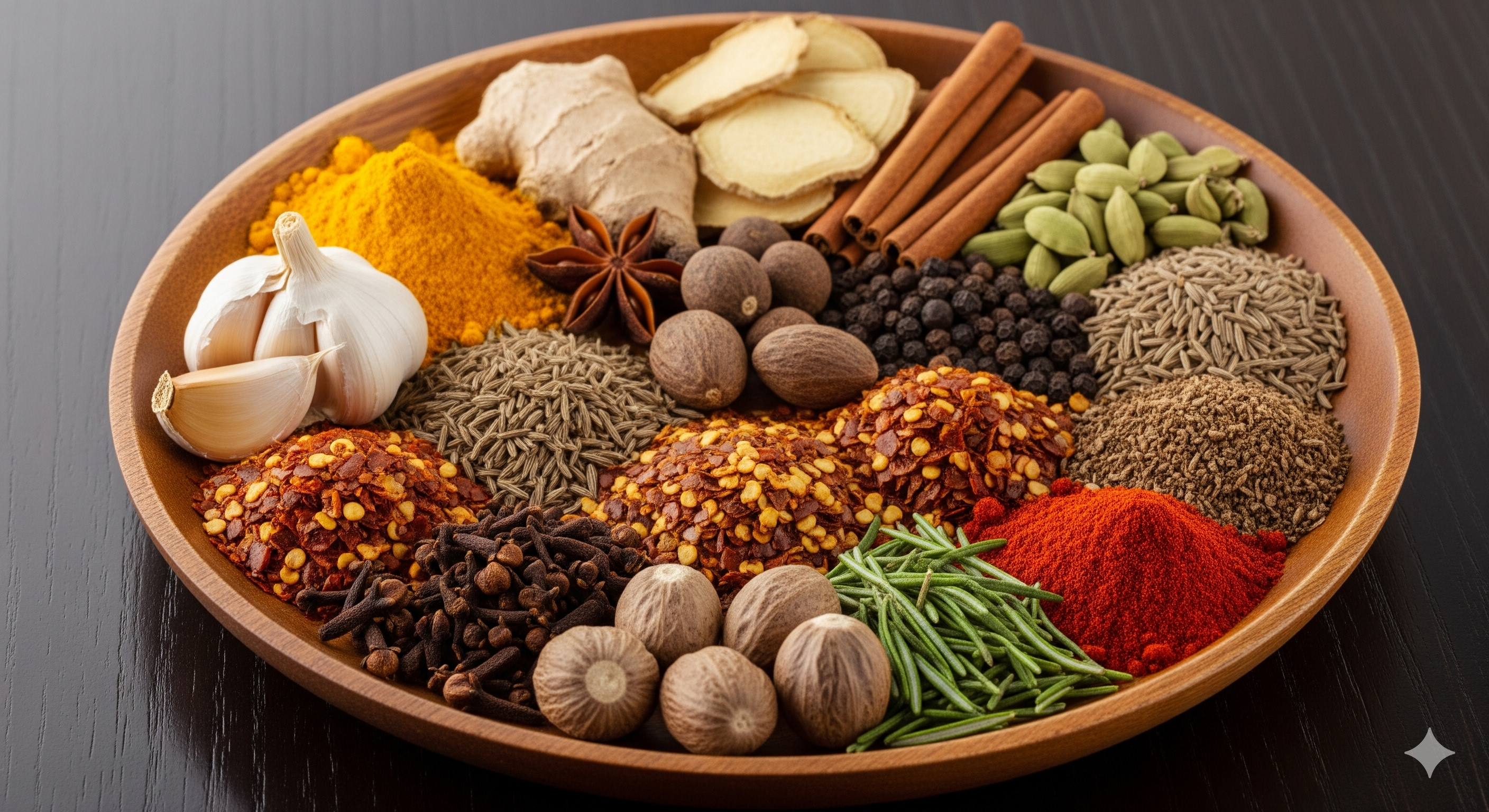
Discover the incredible power of common spices to transform your health and well-being. This guide explores the amazing benefits of incorporating these potent ingredients into your daily routine. Learn how these flavorful additions can do more than just make your food taste good—they can significantly improve your healthy living journey.
The Secret Ingredient to a Healthier You
In the quest for a healthier lifestyle, many of us focus on nutrient-dense foods, regular exercise, and proper hydration. While these are undoubtedly crucial, there’s a world of powerful, often overlooked, ingredients hiding in plain sight: spices. These small but mighty flavor enhancers have been used for thousands of years, not just for culinary purposes, but for their profound medicinal properties. Ancient civilizations recognized their ability to heal, protect, and restore the body, and modern science is now catching up, validating what our ancestors knew intuitively.
Spices are derived from various parts of plants, including seeds, bark, roots, and fruits. Their intense flavors and vibrant colors are a direct result of the high concentration of bioactive compounds they contain. These compounds, such as curcumin in turmeric or allicin in garlic, are responsible for their potent health benefits. They act as antioxidants, anti-inflammatories, and antimicrobial agents, working synergistically with your body to support overall wellness.
A Global Pantry of Healing Spices
Think of your spice rack not just as a collection of seasonings, but as a mini-apothecary. Each jar holds a unique key to unlocking different aspects of your health. By incorporating a variety of spices into your daily cooking, you’re not just adding a dash of flavor; you’re infusing your meals with a dose of natural medicine. This simple act can help ward off chronic diseases, improve digestion, boost your immune system, and even enhance your mood.
This article will delve into the incredible world of 12 of the most beneficial spices you can easily find and use. We’ll explore their unique properties and how they can be a simple, yet powerful, addition to your journey toward healthy living. We’ll also provide a delicious, easy-to-follow recipe that showcases how these powerful ingredients can be combined for maximum benefit, proving that healthy eating can be both delicious and incredibly effective.
Get ready to transform your kitchen into a hub of health and wellness. This guide will show you how to harness the power of these flavorful ingredients to feel your best every single day.
The Recipe: A Golden Turmeric and Ginger Elixir
Servings: 2
Time to Prepare: 5 minutes
Time to Cook/Blend: 5 minutes
Equipment
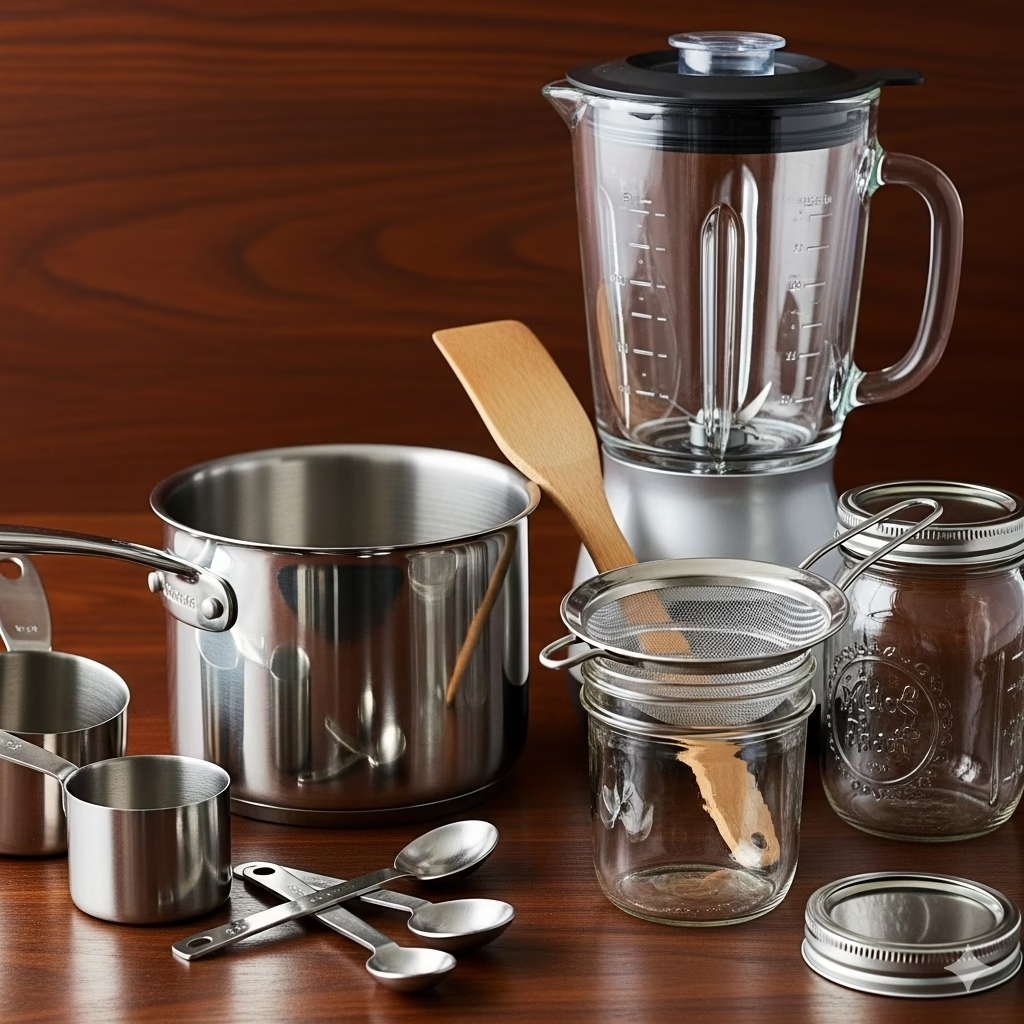
- A small saucepan
- A whisk or spoon
- A blender or a handheld frother
- Mugs or glasses for serving
Nutritional Information (per serving, approximate):
Calories: 120-150 kcal
Protein: 2-3 g
Fat: 5-7 g
Carbohydrates: 15-20 g
Fiber: 2-3 g
This can vary based on the specific milk and sweetener used.
Ingredients
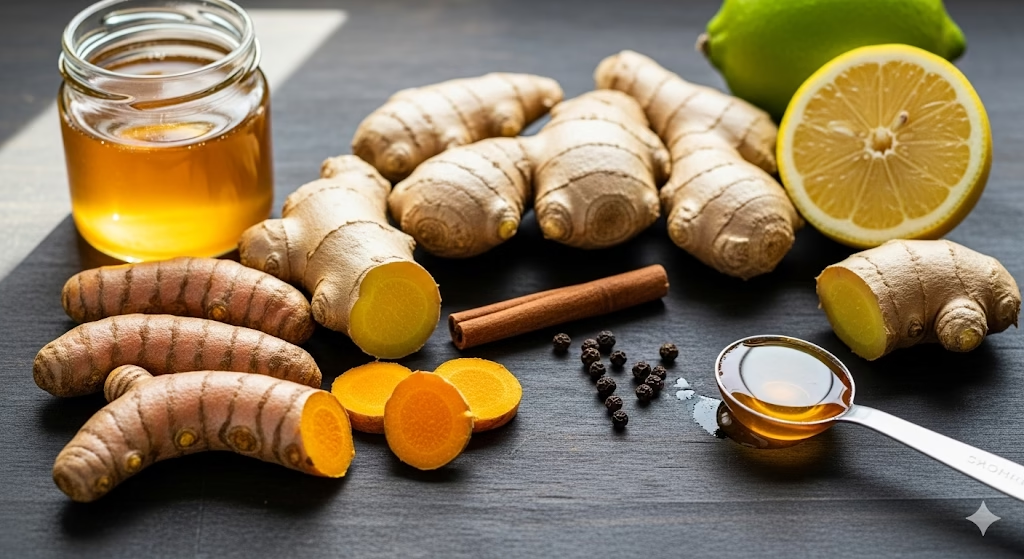
- 2 cups of unsweetened plant-based milk (almond, coconut, or oat milk work well)
- 1-inch piece of fresh ginger, peeled and thinly sliced
- 1 teaspoon of ground turmeric
- 1/2 teaspoon of ground cinnamon
- A pinch of black pepper (crucial for turmeric absorption)
- 1 tablespoon of maple syrup or honey (or to taste)
- 1/4 teaspoon of ground cardamom
- A dash of nutmeg
- Optional: a splash of vanilla extract
Instructions
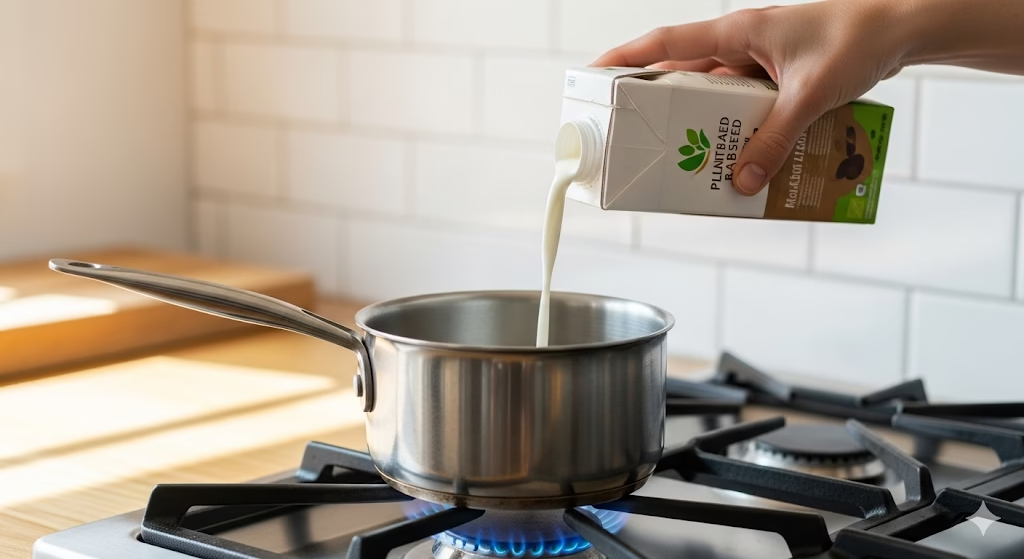
Gently Heat the Milk: Pour the plant-based milk into a small saucepan. Place it on the stove over medium-low heat. You want to warm the milk gently, not boil it.
Add the Spices: Add the sliced ginger, ground turmeric, cinnamon, black pepper, cardamom, and nutmeg to the warming milk. The black pepper is essential as it contains piperine, which dramatically increases your body’s ability to absorb the beneficial compound in turmeric. Whisk the mixture continuously to prevent lumps from forming and to ensure the spices are well-distributed.
Infuse and Simmer: Let the mixture simmer for 3-5 minutes. This low and slow heating process allows the flavors of the fresh ginger and the other spices to fully infuse into the milk, creating a richer, more aromatic base.
Strain and Sweeten: Carefully pour the spiced milk mixture through a fine-mesh strainer into your blender to remove the pieces of ginger. This step ensures a smooth, silky texture. Return the strained liquid to the saucepan.
Finish and Serve: Whisk in the maple syrup or honey and a splash of vanilla extract if you are using it. For a frothy texture, you can use a handheld frother directly in the saucepan or pour the liquid into a blender and blend on low speed for 30 seconds. This will create a delightful, creamy top. Pour the finished elixir into mugs and enjoy it warm.
12 Health-Boosting Spices and Their Benefits
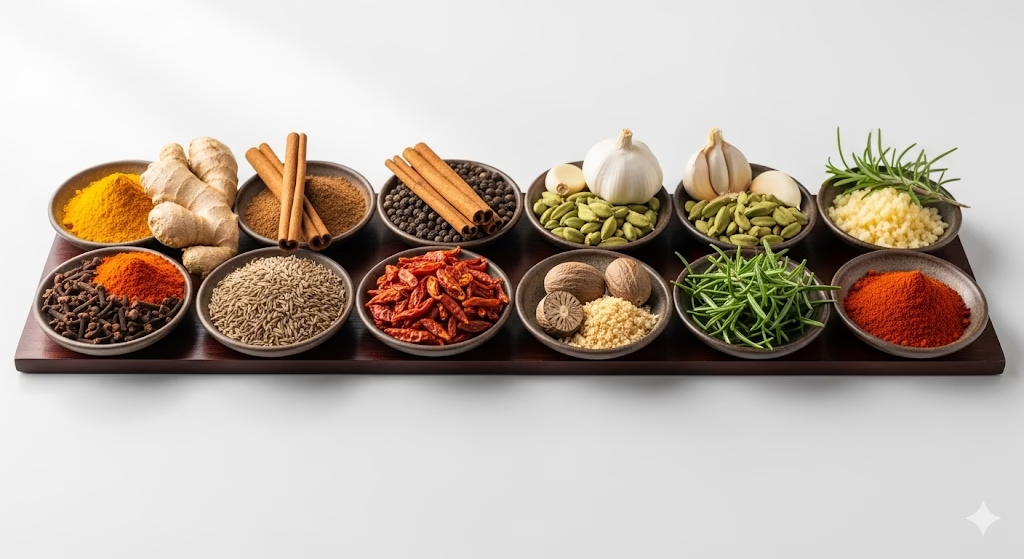
The Power of Spices for Wellness
Spices are more than just seasonings. They are concentrated sources of powerful antioxidants, anti-inflammatory compounds, and essential nutrients that can significantly enhance your health. Here are 12 of the most potent spices and their incredible benefits.
1. Turmeric Spices
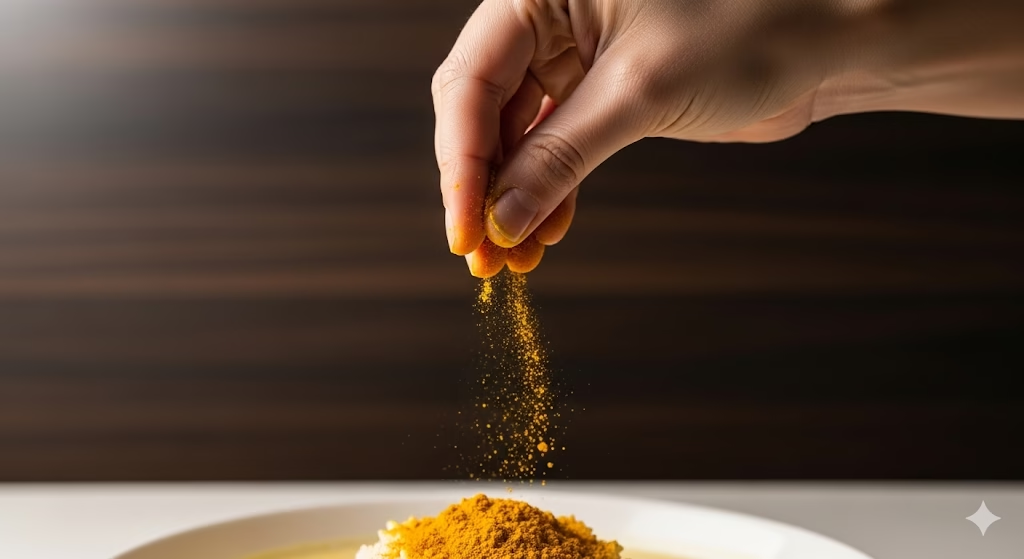
Benefits: Known for its active compound, curcumin, turmeric is a potent anti-inflammatory and antioxidant. It can help reduce joint pain, improve brain function, and support heart health.
In Your Kitchen: Turmeric is a star in curries, stews, and soups. You can also add it to roasted vegetables or blend it into smoothies and wellness shots. As featured in our recipe, it’s the key ingredient in a soothing golden milk latte.
2. Ginger Spices
Benefits: A powerful digestive aid, ginger can soothe an upset stomach, reduce nausea, and ease indigestion. Its anti-inflammatory properties also make it effective for managing muscle pain and soreness.
In Your Kitchen: Fresh ginger adds a zesty kick to stir-fries and marinades. Ginger tea is a classic remedy for nausea, and you can add grated ginger to smoothies or bake it into muffins and breads.
3. Cinnamon
Benefits: Beyond its warm, sweet flavor, cinnamon is known for its ability to help regulate blood sugar levels. It can also improve insulin sensitivity and is rich in antioxidants.
In Your Kitchen: Sprinkle cinnamon on your morning oatmeal, add it to your coffee, or use it in baking. It’s also a fantastic addition to savory dishes, like chili or slow-cooked meat.
4. Black Pepper
Benefits: The king of spices! Black pepper contains piperine, a compound that enhances the bioavailability of other nutrients, especially curcumin from turmeric. It also has digestive and antioxidant benefits.
In Your Kitchen: Freshly ground black pepper is a universal seasoning. Use it to finish savory dishes, from eggs and salads to meats and vegetables. Always pair it with turmeric to unlock the full potential of curcumin.
5. Garlic
Benefits: A staple in many kitchens, garlic is a powerful immune booster. It contains allicin, a sulfur compound with potent antimicrobial and antibacterial properties that can help fight off infections.
In Your Kitchen: Garlic can be used raw in dressings or minced and sautéed as a base for sauces, soups, and stir-fries. Roast whole garlic cloves for a sweet, caramelized flavor that’s perfect for spreading on toast.
6. Cardamom Spices
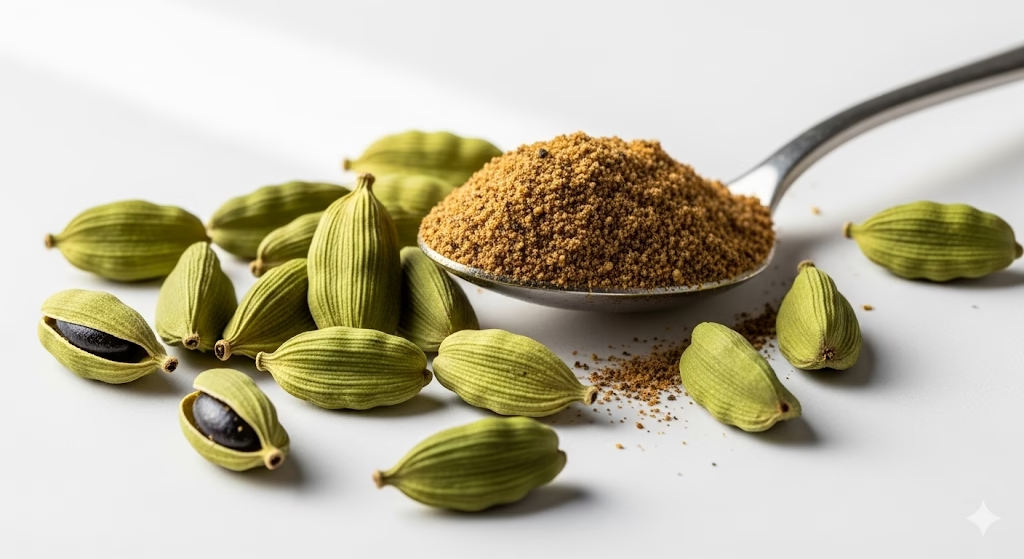
Benefits: This fragrant spice is a natural breath freshener. It also has diuretic properties that can help lower blood pressure and is used in traditional medicine to support digestion and fight inflammation.
In Your Kitchen: Cardamom adds a unique, aromatic flavor to both sweet and savory dishes. Use it in baked goods, rice pilafs, and curries, or add a few pods to your coffee or tea.
7. Cumin
Benefits: Cumin is excellent for digestion and can help prevent bloating and gas. It’s also a good source of iron and has compounds that have been shown to help lower cholesterol.
In Your Kitchen: Cumin is a foundational spice in many cuisines, including Mexican, Middle Eastern, and Indian. Use it to season tacos, chili, roasted chickpeas, or vegetables.
8. Cayenne Pepper
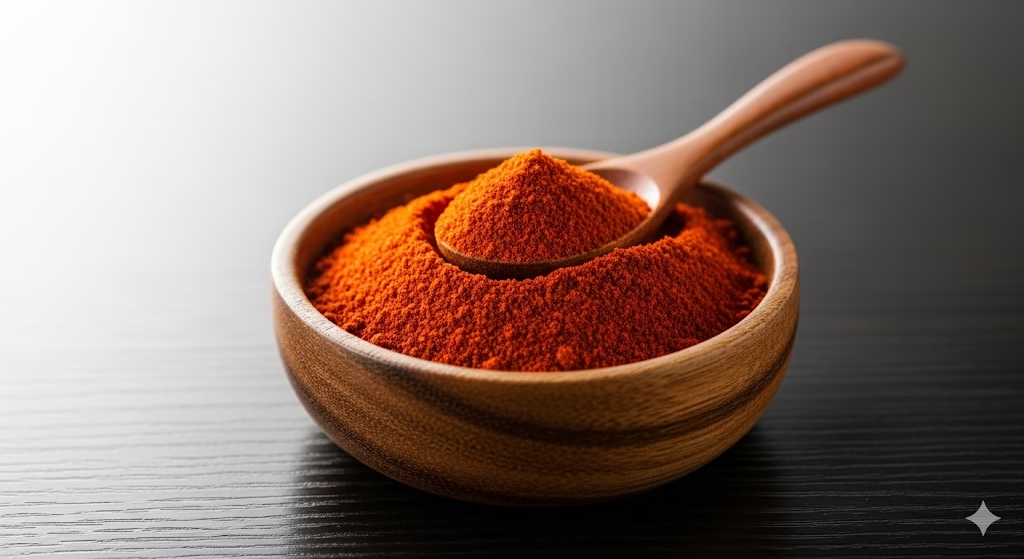
Benefits: The heat from cayenne comes from capsaicin, a compound that can boost metabolism and act as a natural pain reliever. It can also help improve blood circulation.
In Your Kitchen: A small pinch of cayenne can add a warming kick to any dish. Sprinkle it on eggs, soups, and stews, or use it in marinades for a fiery flavor.
9. Cloves
Benefits: Cloves are incredibly high in antioxidants and have strong antimicrobial properties. They can help relieve toothaches and are used to support liver health.
In Your Kitchen: Whole cloves are often used to flavor mulled wine, hot ciders, and pot roasts. Ground cloves are a key ingredient in many baking recipes, like gingerbread and apple pie.
10. Nutmeg Spices
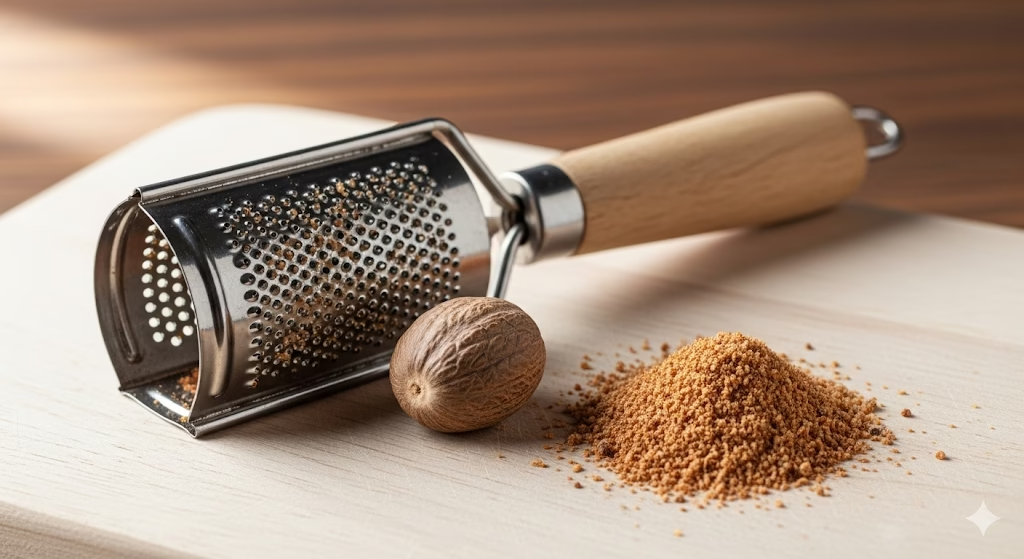
Benefits: A little goes a long way with nutmeg. It’s known for its calming properties and can aid in sleep. It also contains powerful antioxidants and can help improve brain health.
In Your Kitchen: Freshly grated nutmeg has the best flavor. Sprinkle it over creamy sauces, baked goods, custards, or on top of a warm beverage like our golden elixir.
11. Rosemary
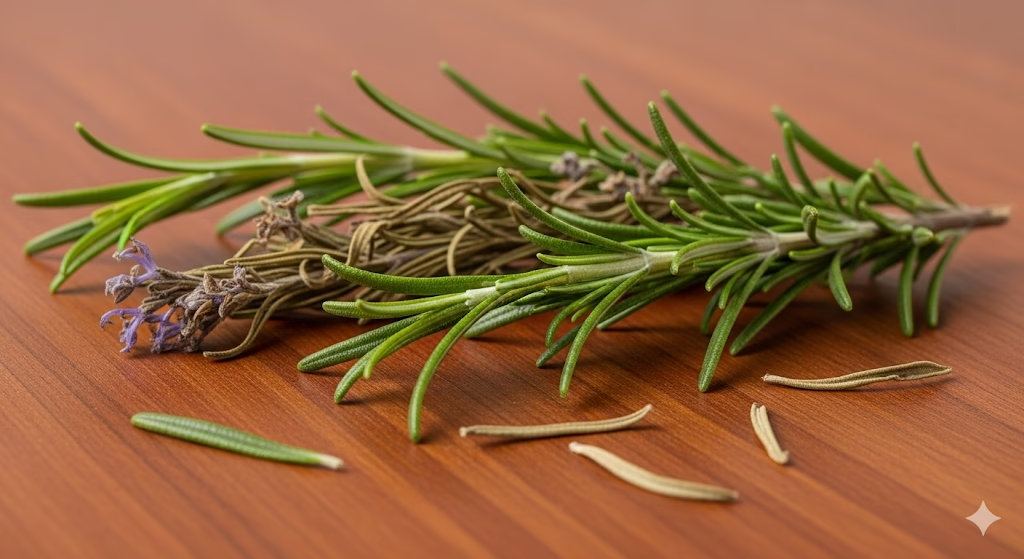
Benefits: This aromatic herb is rich in antioxidants and anti-inflammatory compounds. Rosemary can help improve memory and concentration and is often used to support brain health.
In Your Kitchen: Rosemary pairs beautifully with roasted meats like chicken and lamb. It also enhances the flavor of roasted potatoes and root vegetables and can be used to infuse olive oil.
12. Paprika Spices
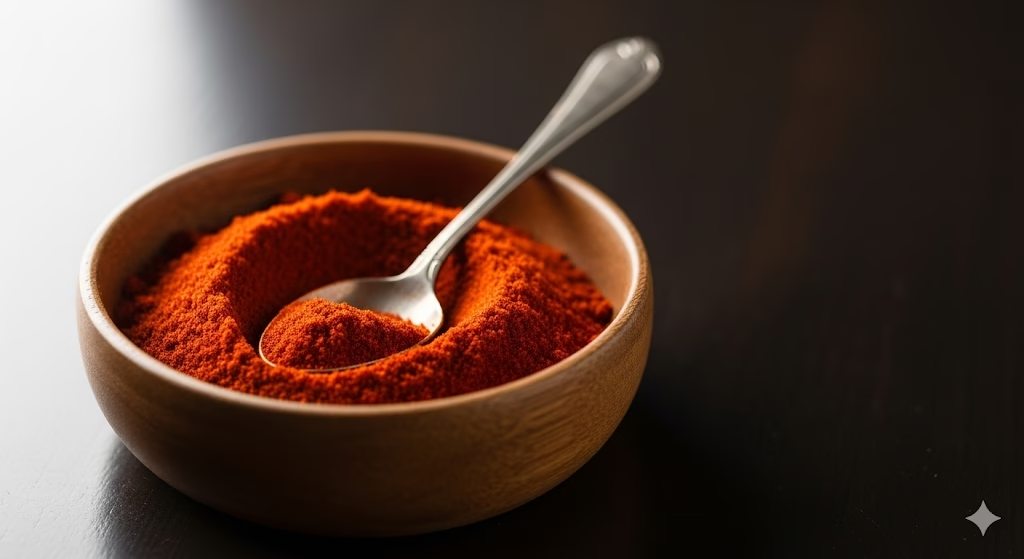
Benefits: Made from ground sweet peppers, paprika is rich in carotenoids, which are powerful antioxidants. It’s also a good source of Vitamin A and can support healthy vision and reduce inflammation.
In Your Kitchen: Paprika adds a vibrant color and mild, smoky flavor to dishes. Use it in rubs for chicken and fish, sprinkle it over deviled eggs, or stir it into stews and goulash.
Variations and Customization
| Variation Type | How to Customize | Notes |
| Nutritional Boost | Add 1 tablespoon of ground flaxseed or chia seeds to the blender. | Adds fiber, protein, and omega-3 fatty acids for a thicker, more satiating drink. |
| Sweetness Level | Adjust the amount of maple syrup or honey, or use a natural, zero-calorie sweetener like stevia. | Tailor to your personal preference without sacrificing flavor. |
| Flavor Profile | Add a pinch of star anise or a fresh basil leaf for an unexpected twist. | Experiment with different herbs to create a unique flavor profile. |
| Spiciness | Add a tiny pinch of cayenne pepper for a little kick. | Use caution; a small amount can go a long way. This is a great addition for a metabolism boost. |
| Creaminess | Use full-fat coconut milk for an incredibly rich and creamy texture. | This variation is higher in calories but provides a luxurious feel. |
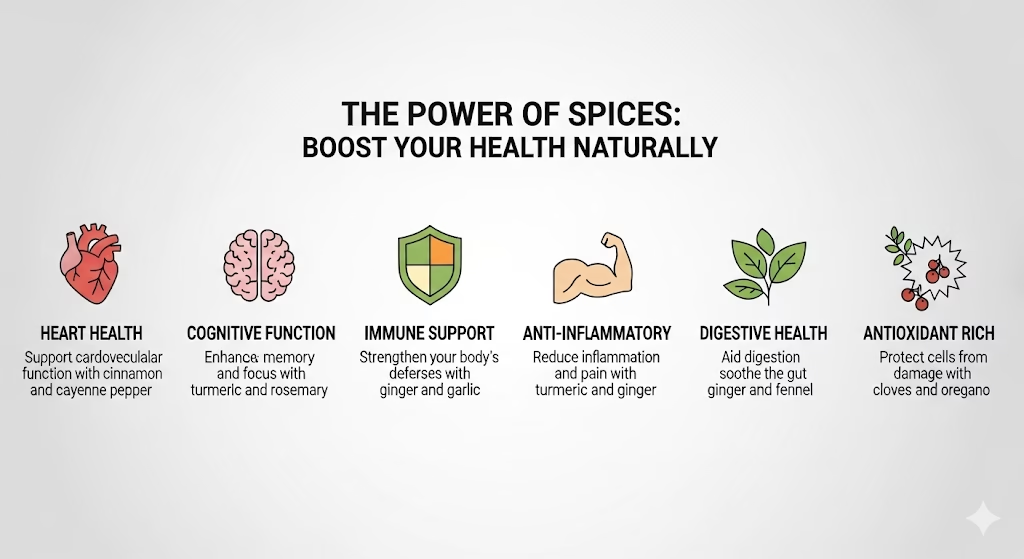
Final Thoughts

As you can see, the world of spices is a treasure trove of health benefits waiting to be explored. From the anti-inflammatory power of turmeric to the digestive comfort of ginger, these everyday ingredients are a simple and effective way to elevate your healthy living journey. Don’t think of them as just flavorings; they are a fundamental part of a balanced diet, offering a natural path to better health. Start small by adding a pinch of cinnamon to your morning oatmeal or a dash of black pepper to your favorite dish. Your body will thank you for it.
What’s your favorite spice to cook with? Share your go-to spice and how you use it in the comments below!
Frequently Asked Questions (FAQs)
What is the difference between herbs and spices?
Herbs are typically the leafy green part of a plant (like basil, rosemary, or cilantro), while spices come from the bark, root, seed, or fruit of a plant (like cinnamon, ginger, or black pepper). Both are used to add flavor to food and offer a wide range of health benefits.
How should I store my spices to maintain their freshness?
Store your spices in airtight containers in a cool, dark place away from direct sunlight and heat. Avoid storing them above the stove or next to a window. Whole spices will stay fresh longer than ground spices, so it’s a good idea to buy whole spices and grind them as needed for the most potent flavor and health benefits.
References
- Healthline – 10 Health Benefits of Turmeric and Curcumin
- NIH – Health Benefits of Culinary Herbs and Spices
- WebMD – Garlic – Uses, Side Effects
Recent Posts
